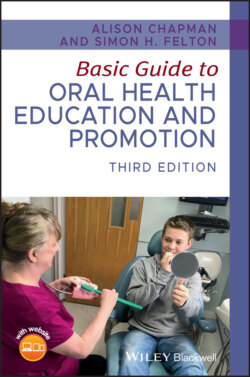Читать книгу Basic Guide to Oral Health Education and Promotion - Alison Chapman - Страница 87
Extrinsic staining
ОглавлениеExtrinsic staining occurs on enamel surfaces after a tooth has erupted, when pigments from the following substances stain the salivary pellicle:
Tannin (in tea, coffee, and red wine).
Tobacco (smoking or chewing).
Betel nut (paan, gutka, or quid) chewing in certain ethnic groups (Figure 2.6).
Mouthwash (such as those containing chlorhexidine and essential oils).
Iron supplements.
Foods – e.g. berries and turmeric.
Figure 2.6 Extrinsic staining caused by betel nut chewing.
Source: Dr Susan Hooper, Bristol University. Reproduced with permission of Susan Hooper.
Extrinsic stains can be removed with scaling and polishing or by air polishing using a mild abrasive powder.
Occasionally, patients with clean mouths develop a dark stain on lingual and palatal tooth surfaces, which is difficult to remove. This is called black stain and the cause is unknown. Children can also develop green stain, when the membrane covering an erupting tooth remains and is stained by bacteria. This is usually seen on the buccal surfaces of the upper incisors, can look unsightly, and is often difficult to remove.
